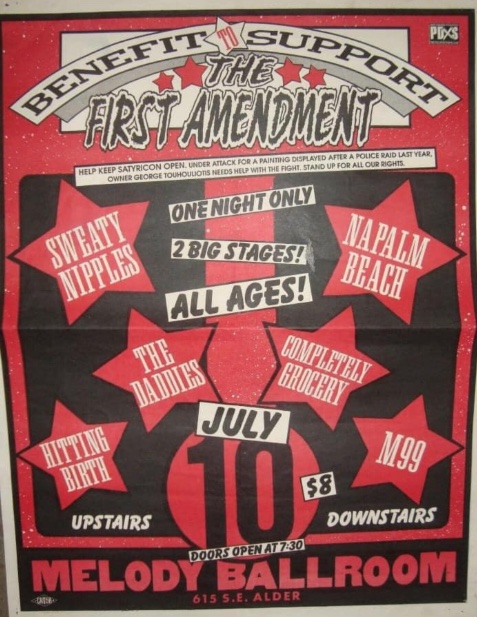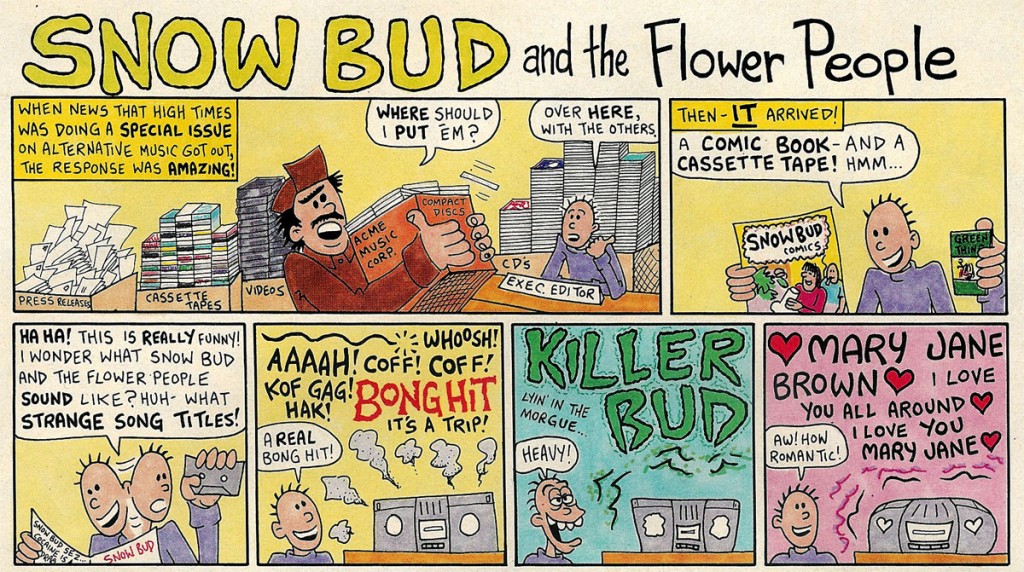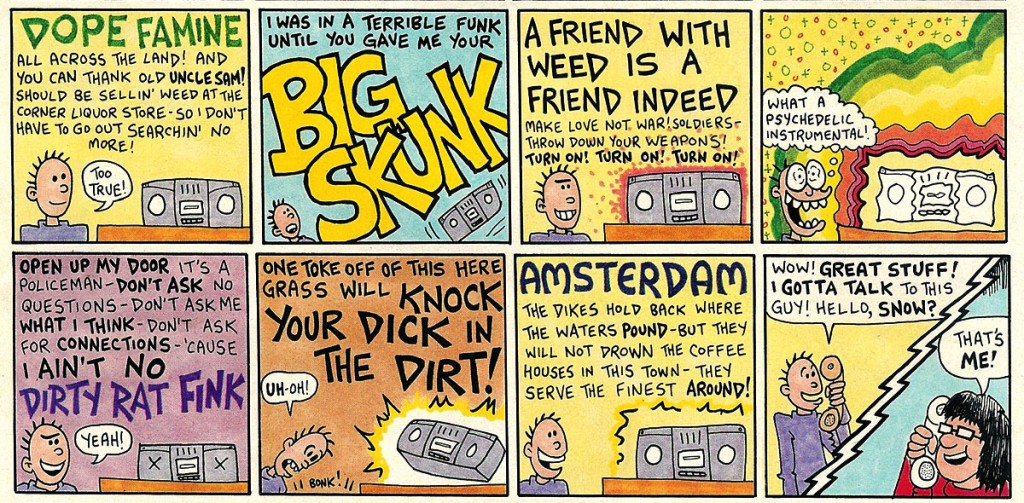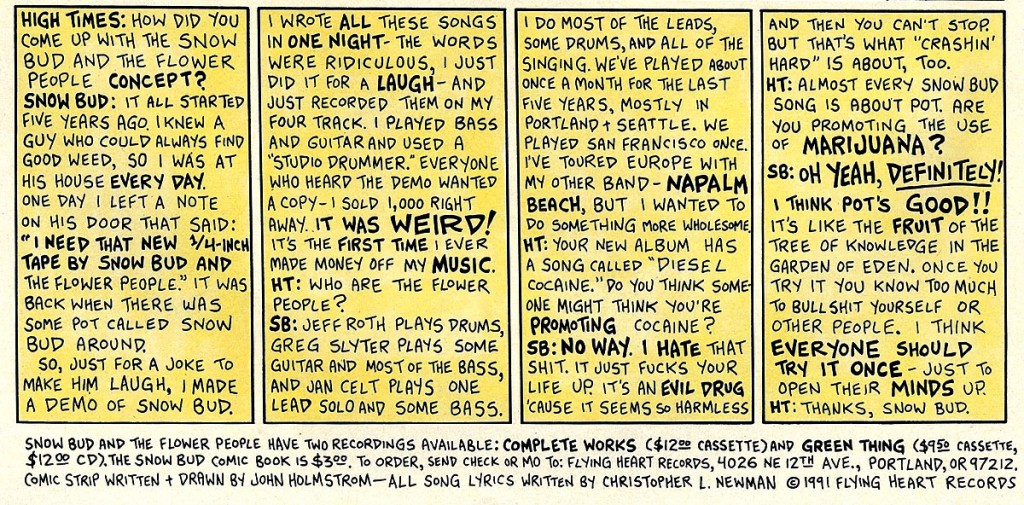1990 Satyricon Riot – what actually happened?
In his 2021 book, The Rocky Road To Recovery: The Life of Chris Newman of Napalm Beach Eric Danielson claimed that Chris Newman “attended and participated in the infamous Satyricon Riot” (p 77, 171). This claim is uncited, unsupported, and false. I am not claiming that Danielson has deliberately falsified information. It’s possible this was a rumor that everyone had simply accepted as self-evident.
The Satyricon Riot of April 28-29 1990 is an event that has come up in conversation and in the press from time to time, ever since I moved to Portland in the summer of 2000. At some point in the early 2000s I conducted an interview with Satyricon owner George Touhouliotis who cited that event as being a turning point in his enthusiasm for running the club. What I didn’t understand, until researching the event in The Oregonian archives a few days ago, is that it really was not a one-night affair – but that it seems to have inspired a long running conflict involving not just a few criminal cases, but civil lawsuits stretching into the mid 1990s.
So what actually happened on this night? The core of the incidence seems to be this – that Touhouliotis had stepped outside and decided to take a leak in a neighboring vacant lot. Portland Police Officer Rocky Balada spied and then confronted him. George tried to give him the brush off and walk back into the club, and that’s when Balada began to beat George. What George told me when I interviewed him, and what seems to have come out a grand jury trial later that year, is that at first, no one understood that Rocky Balada was a police officer. He was described as a “guy in a windbreaker” with an earring beating up on George, the club owner. At that point two club employees, Bruno Berger, the bouncer, and Taki Kapellakis, the cook, rushed to George’s aid. After that, more police showed up. Berger and Kapellakis were charged with “among other things, rioting and Escape I” – felony charges. These cases were thrown out by the grand jury the following June (Stanford, “Whose Riot Was That Anyway?” Oregonian, June 20, 1990)
Charges of assault against Steven A. Birch, and John J. Noyola were dropped in July 1991. Both were convicted of harassment, put on probation, and ordered to pay fines. George Touhouliotis and Gilly Ann Hanner “entered pleas of guilty and no contest to misdemeanor charges.” (Leeson, “2 Patrons Convicted In Satyricon Disturbance” Oregonian, July 4, 1991)
By this point, four police officers had filed a civil suit against Touhouliotis and five other individuals, and Touhouliotis had filed a counter suit. These civil suits dragged on for years. One of the suits was by Officer Balada, against the the club, for mental distress resulting from the display of a painting – “the painting of a policeman choking a bleeding black man included the name ‘Rocky.'”
On July 10, 1991 a benefit concert was held at the Melody Ballroom to help Touhouliotis defray legal expenses. It was called The Benefit To Support The First Amendment. Text on the poster read “Help keep Satyricon open. Under attack for a painting displayed after a police raid last year, owner George Touhouliotis needs help with the fight. Stand up for all our rights.” The poster went on to advertise “One night only – 2 Big Stages – ALL AGES.” It appears that Napalm Beach and Sweaty Nipples were co-headliners. This doesn’t make Chris a participant in the riots – it simply means someone asked him to play a benefit to help the beloved club owner, George Touhouliotis, and he accepted. Through the late 1980s and early 1990s Chris’ bands seem to have been playing Satyricon an average of twice a month (alternating between Napalm Beach and Snow Bud). So it was only natural that Chris would want to support the club and George, and as a songwriter and artist, it was only natural that he would support our constitutional right to free speech. From my perspective, all good US citizens should want to support and defend the first amendment – though that, and what that does and does not entail exactly – is, I understand, often a matter of controversy.
Looking through Oregonian archives, appears that most or all of the legal wrangling over the May 29 1990 conflict and the “Rocky” painting was completed by 1995. And that’s when, from my perspective, the story gets even weirder.
Musician Jeffrey Lee Pierce died of a brain aneurism on March 31, 1996, exactly one year, as it happens, after the gun murder of Tejano artist Selena Quintanilla-Pérez (and exactly 23 years before the gun murder of rapper Nipsey Hussle). Another musician named Pierce – Paula Pierce of the Pandoras – died of an aneurism in 1991 at age 31 – just one of many weird spiderweb links around these events. Chris was a big fan of Jeffrey Lee Pierce, but he didn’t find out about his death until the following November. Once he found out, Chris put together a memorial tribute concert for Jeffrey Lee, which was held on December 11, 1996 (also my daughter’s first birthday). Two days later, on December 13, 1996, Chris was arrested for heroin possession, an event which would eventually lead to him and his wife Valarie losing all their possessions and becoming homeless for the better part of a decade.
The catalytic event that led to Chris’ fateful arrest had to do with Valarie creating a ruckus at a 7-11 after spilling a tray of nachos. The clerk at the 7-11 called the police, and Chris allowed them to frisk him. They found evidence of heroin, then searched the car and found more.
Could this little nacho fracas and the resulting drug bust have been seen as a parallel to the Satyricon Riot? Something that is interesting – especially in light of the July 1991 Satyricon benefit show advertising “Two Big Stages” – is there were actually two different incidents in downtown Portland on the night of April 28-29, 1991 involving arrests of bar patrons. The other incident was at a bar called Goldie’s and resulted in the arrest of Portland Trailblazer Cliff Robinson. (After retiring from basketball Robinson suffered a stroke in 2017 and died in of lymphoma in 2020 at the age of 53. Robinson was born in Buffalo, New York, and died in Portland, Oregon.)
So by the end of 1996, Chris was dealing with arrest warrants, legal problems, treatment programs, and all kinds of loss, including financial ruin. This is also when Valarie openly began working as a prostitute.
Meanwhile, back in April 1996, the Satyricon which had previously been a beer and wine only venue, acquired a liquor license. The change was announced in an April 12, 1996 Oregonian article entitled “Spiking the punks at boozy Satyricon: Booze at Satyricon.” Twelve days later, the Oregonian published another article by the same writer, with the headline “Satyricon’s Dirty Dozen” and opening with a quote from 19th century clergyman John Henry Newman. This “dirty dozen” reference had to do, at least on the surface, with Satyricon celebrating its 12th anniversary. But what else does it mean? It was the title of a 1967 film about “a top-secret mission to train some of the Army’s worst prisoners and turn them into commandos to be sent on a virtual suicide mission just before D-Day.” But before it was a film, “dirty dozens” were spoken word insult games (later showing up in blues lyrics) where (according to Wikipedia) “participants insult each other until one gives up.” (Wikipedia, dozens (game))
Another interesting construction in this article is the one that was pulled for the headline of the April 12 article “Spiking the punks.” Spiked belts were a 1980s staple of punk rock gear, but what is the meaning of all of that? I now have come to believe that “spike” is slang for the covert insertion of radio frequency activated devices which are used by intelligence agencies (and doctors and police linked to them) to manipulate behavior, create disease, and to murder. This conclusion is based on direct forensic evidence which I have found and documented, as well as on pattern-based evidence. I have discerned that there is actually a lot of slang linked to this technology – wires/wired, or chicken wire, and pins are also slang for the same thing. Chain link fences are used in photos and video to symbolize someone being wired up in this way. Such references come up with regularity in different media, including song lyrics, and this goes back at least to the 1970s (though the technology itself is older). The idea of “spiking” being something more sinister than a simple liquor license is further supported by the doubling in the headling – the word “booze” is doubled and the name “Satyricon” is doubled. This is a reference to matched, or “twin” attacks and murders – covert assassinations that are linked to each other, symbolically or otherwise (often by dates, names, circumstances).
As far as the content of the articles, what I find myself asking is how did George Touhouliotis suddenly have the money to do a $200,000 renovation of Satyricon? This was a man who five years earlier was in dire financial straights, scraping together money from benefit shows, to pay a few thousand dollars in legal fees. $15,000 from the Portland Development Commission still leaves $185,000 the Satyricon allegedly paid out of its own pocket.
From my perspective, it seems to be indicative of a pattern around Chris and me in which things begin to simultaneously go really bad for us, and really good for everyone else. But I’m beginning to see it’s not just Chris and me who have been suffering. The concept of “spiking the punks” – and the fate of many of those in the community – by which I mean many premature deaths which I maintain have been falsely attributed to bad luck, drugs, and/or a “rock n’ roll lifestyle”- are starting to tell a bigger story.
And what about Officer Balada? In June 1999 Balada was caught up in another scandal. He was accused of allowing officers working federally-funded drug missions to leave hours early yet still receive pay for the full shift. The federal program was called “Operation North Star.” According to Balada and others, the practice of paying officers federal funds for time they didn’t actually work was known as “cuff time” or “short nights” and was common throughout the Portland Police Department. Balada was transferred, then relieved of his duties in July 1999, and promptly filed a stress disability claim against the city. It’s difficult to sort out how many lawsuits Balada filed in the 1990s, but there were several, and he seems to have frequently won money in settlements from these suits. George Touhouliotis paid him a settlement of $7,000 (Police officer near settling lawsuit – Oregonian – April 13, 1994 – page B02). In 1993 Balada sued then-Mayor Bud Clark and various city officials “accusing them of engaging in racism and a plot to oust him from the bureau” and won a settlement of $34,000. In 2000, Balada, who was receiving disability pay, sued the City of Portland for $22 million, claiming civil rights violations and defamation (Policeman Sues City, Superiors – Oregonian – July 1, 2000 – page D01). Balada seems to have been staying home and receiving disability pay from July 1999 to September 2006, when he retired and received his pension as well as $92,300 from the city in addition to the disability pay he had already been receiving since 1999 (December 4, 2008, Oregonian, Bernstein – page B02).
References: (links are to PDF files)
SNELL – of the Oregonian Staff, J. (1990, April 30). FOUR INJURED IN RIOT OVER TAVERN ARREST. Oregonian, p. C08.
SNELL – of the Oregonian Staff; DWIGHT JAYNES of The Oregonian also contributed to this report from Dallas. ‘TRAIL BLAZER ROOKIE CITED AFTER BRAWL‘, Oregonian, 30 Apr 1990 A01
STANFORD – of the Oregonian Staff, P. (1990, June 20). WHOSE RIOT WAS THAT ANYWAY? Oregonian, p. PAGE: D01.
LEESON – of the Oregonian Staff, F. (1991, July 4). 2 PATRONS CONVICTED IN SATYRICON DISTURBANCE. Oregonian, p. C03.
HUGHLEY – of the Oregonian Staff, M. (1991, July 5). A LITTLE HELP FROM HIS FRIENDS. Oregonian, p. E06.
HUGHLEY of The Oregonian staff, M. (1996, April 12). SPIKING THE PUNKS AT BOOZY SATYRICON, Oregonian, p. AE04.
BERNSTEIN – The Oregonian, M. (2000, July 1). POLICEMAN SUES CITY, SUPERIORS. Oregonian, p. D01. Available from
LEESON – of the Oregonian Staff, F. (1994, April 13). POLICE OFFICER NEAR SETTLING LAWSUIT. Oregonian, p. B02.
History of Portland Rock Part 7: The Early ‘90s. SP Clarke (originally published in Two Louies, Portland)
https://twolouiesmagazine.com/history/history-of-portland-rock-7/
Clifford Robinson (basketball, born 1966) – Wikipedia entry https://en.wikipedia.org/wiki/Clifford_Robinson_(basketball,_born_1966)
Danielson, Eric N. The Rocky Road To Recovery: The Life of Chris Newman of Napalm Beach. Pagoda Press/self-published (September 12, 2021). https://www.amazon.com/dp/B09F3GSNDL/



